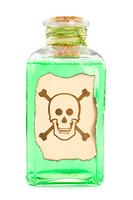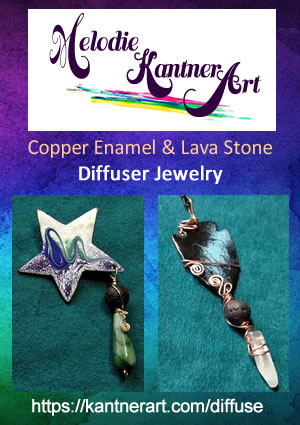Does your Essential Oil Supplier use any of These 9 Dirty Tricks and Adulterations to Extend Profits?
Unfortunately not all essential oils are created equal. In fact many, if not all the oils on the market are what is called “perfume quality” or “4th & 5th quality oils.
These are over-processed, chemical laden, highly adulterated and de-natured products that, in reality, are little more than cheap perfume made from various odorous plants. This includes oils found in health food stores. Many people think that when they buy an oil that is labeled as “100% pure” they are getting good oils. This is far from true.
Pure unadulterated essential oil is very hard to come by & can be very expensive. One reason for this is because it can take as many as 500 to 2,000 pounds or more of raw plant material to produce just a pound of essential oil.
Fact: The words “100% Pure” on the label can mean nothing more than the oil has not been diluted with a carrier oil or another cheaper essential oil.
Fact: In the U.S., a company can have the word Pure on the label with as little as 5% essential oil in the bottle. This just means that they have some of the real oil in the bottle.
Fact: Chemical additives can be included in some so called Pure Essential Oils.
Fact: Chemical additives fracture the molecular structure of essential oils, altering their chemical constituents, thus destroying their beneficial properties. And, of course, the chemicals themselves may present a health risk.
Some ways Essential Oils can be ADULTERATED

- A common way to extend the volume of an oil is to simply add alcohol, propylene glycol, or acetate to the distilled essential oil.
- Some oil producers add synthetic oils to the so called “Pure” oil.
- Some oil producers do not actually add chemicals to their oils. Instead, they inject chemical solvents into the water in their boilers during the distillation process, increasing output by about 18%.
Imagine what happens to essential oils when chemicals are added to water, which is boiled into steam and then forced into plants to extract their oil. It IS impossible for an essential oil extracted through this method to avoid containing at least SOME of these chemical additives. - Many essential oils are produced by solvent extraction and can wear the label “pure” essential oils.
With the solvent extraction process essential oils are extracted by immersing plants in chemical solvents, such as hexane, petroleum benzine, ether, or carbon tetrachloride. These solvents are later removed by vacuum distillation. But . . . like the solvent injection steam distillation process, do you think it is possible to completely eliminate all chemical residue from oils extracted by immersing plants in harsh chemicals?
These extraction processes both destroy essential oil’s beneficial properties and bring their own health risks from the residual chemical additives which remain in the essential oils they produce.
Depending on the plant, it takes from 250 pounds to several tons of plants to produce a SINGLE pound of essential oil. It takes about 250 pounds of lavender to produce a pound of lavender oil, and several TONS of rose petals to produce a pound of rose oil.
As you might imagine, producers can dramatically extend their profit margin by extending the oils. The volume of lavender oil shipped from France is 100 TIMES the volume grown and distilled there! This suggests that 99% of all lavender oil coming from France has been extended, adulterated with chemical additives.
Other Dirty Tricks that will DESTROY oils:
- Redistilling Plant Material: Essential oil producers often increase profits by redistilling plant material in as many as 5 or 6 distillations. They save the first distillation for genuine authentic grade essential oils, then selling the second, third and so on to the unsuspecting public.
Imagine if you are using a teabag over and over. The first cup of tea tastes good but the second is not nearly as good, let alone 3rd, 4th 5th . . . - High Pressure, Heat Distilling: Distillation at lower temperatures and low pressure is the preferred method for producing high quality, premium grade essential oils.
Imagine pressure cooking a salad: Nutritionists tell us not to boil our vegetables because the hot water removes the vitamins and nutrients. Similarly, “boiling” plants to extract their essence destroys many of a plant’s fragile constituents.
Keeping the distiller’s temperature low is a must. - Soil Quality/ Pesticides: Another factor in the purity of the oils is the land on which the plants are grown. Inexpensive essential oils are usually produced by large farm operations that use chemical fertilizers and pesticides. Pesticides are oil-soluble and their residue remains in essential oils extracted from pesticide-treated plants.
Some of the lavendin grown in Russia and China (used to make much of the so-called lavender oil sold around the world) actually contains radioactive isotopes because of the nuclear fallout from Chernobyl. Imagine using an essential oil extracted from plants containing radioactive isotopes AND to which chemicals have been added to extend the oil — synthetic linolol acetate to improve the fragrance, and propylene glycol to increase the volume! - Passing Off Hybrids as Pure: Some unscrupulous brokers market an engineered hybrid “lavendin” as true Lavandula officinalis. Lavendin can be adulterated by flashing off (burning off) the camphor and adding synthetic linalyl acetate. These brokers hope to represent lavendin as true lavender to increase profits.
- In addition, some bottles do not contain the oil stated on the label. Oils marked as “clove” may be distilled from the leaf instead of the bud. Clove leaf oil is less expensive but does not have the same chemistry or properties as clove bud oil. Many times, essential oils marked “cinnamon” are actually “cassia.”
Essential oils MUST be distilled for the proper length of time to release all their active constituents.
-
For example, cypress must be distilled for 24 hours to release all the chemical constituents. Most distilling operations, throughout the world, only distill cypress one hour and 15 minutes.
Similarly, lavender does not produce all its beneficial constituents unless it is distilled for one hour and 30 minutes; but most lavender is distilled for only 15 minutes! Three-quarters of the volume is extracted during the first quarter of the distillation process. Many producers end the process there because the increased time does not
significantly increase the volume. Time is “only” a crucial factor to extracting the plant’s beneficial properties.
Fact: According to an independent laboratory in California, Flora Research, MOST essential oils sold are either synthetic or adulterated with chemical additives.
Fact: Young Living is the largest grower of essential oil plants in the world.
View some of my pictures from my visit to Young Living Farms:
https://aromanotes.com/young-living-farms





